
Modular home and building manufacturer Champion Homes (NYSE:SKY) missed Wall Street’s revenue expectations in Q1 CY2025, but sales rose 10.7% year on year to $593.9 million. Its non-GAAP profit of $0.65 per share was 15% below analysts’ consensus estimates.
Is now the time to buy Champion Homes? Find out by accessing our full research report, it’s free.
Champion Homes (SKY) Q1 CY2025 Highlights:
- Revenue: $593.9 million vs analyst estimates of $601.4 million (10.7% year-on-year growth, 1.2% miss)
- Adjusted EPS: $0.65 vs analyst expectations of $0.77 (15% miss)
- Adjusted EBITDA: $52.59 million vs analyst estimates of $63.44 million (8.9% margin, 17.1% miss)
- Operating Margin: 7.1%, up from 1.4% in the same quarter last year
- Free Cash Flow was $33.44 million, up from -$7.84 million in the same quarter last year
- Sales Volumes rose 5.1% year on year (15.3% in the same quarter last year)
- Market Capitalization: $4.83 billion
Company Overview
Founded in 1951, Champion Homes (NYSE:SKY) is a manufacturer of modular homes and buildings in North America.
Sales Growth
A company’s long-term performance is an indicator of its overall quality. Any business can have short-term success, but a top-tier one grows for years. Luckily, Champion Homes’s sales grew at an excellent 12.6% compounded annual growth rate over the last five years. Its growth beat the average industrials company and shows its offerings resonate with customers.
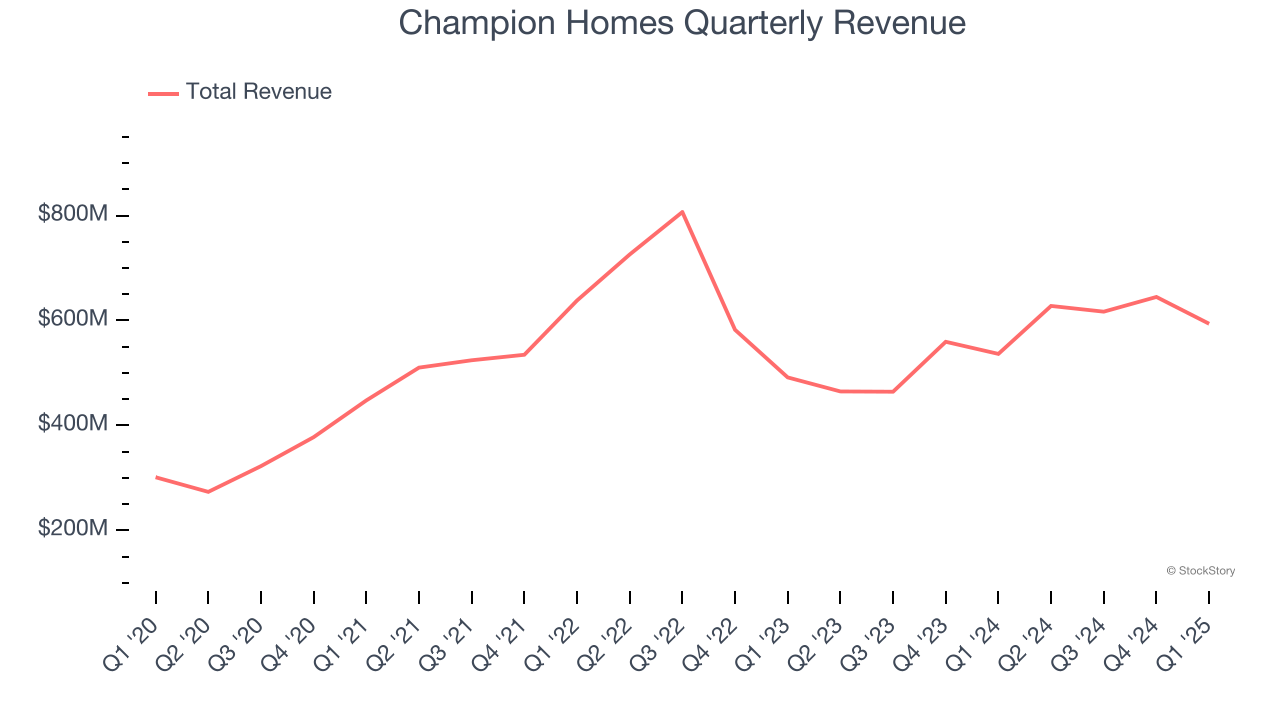
Long-term growth is the most important, but within industrials, a half-decade historical view may miss new industry trends or demand cycles. Champion Homes’s recent performance marks a sharp pivot from its five-year trend as its revenue has shown annualized declines of 2.4% over the last two years. 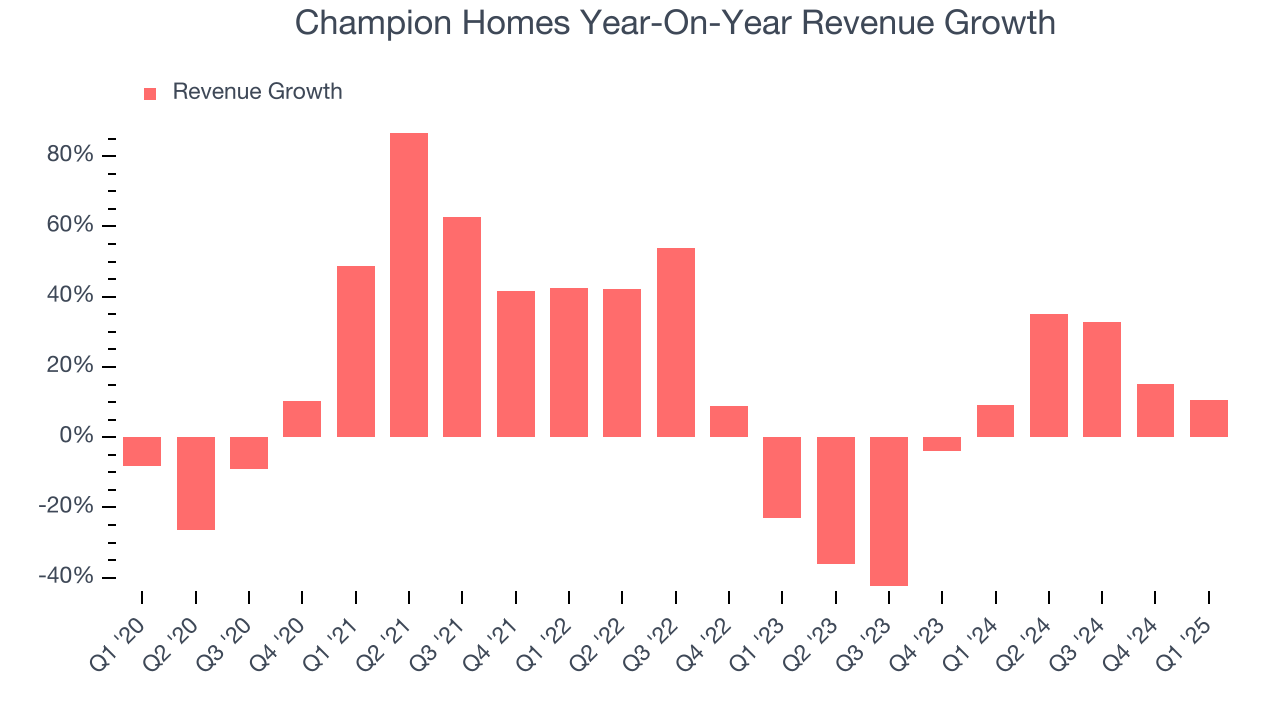
We can better understand the company’s revenue dynamics by analyzing its number of units sold, which reached 5,941 in the latest quarter. Over the last two years, Champion Homes’s units sold averaged 4.6% year-on-year growth. Because this number is better than its revenue growth, we can see the company’s average selling price decreased. 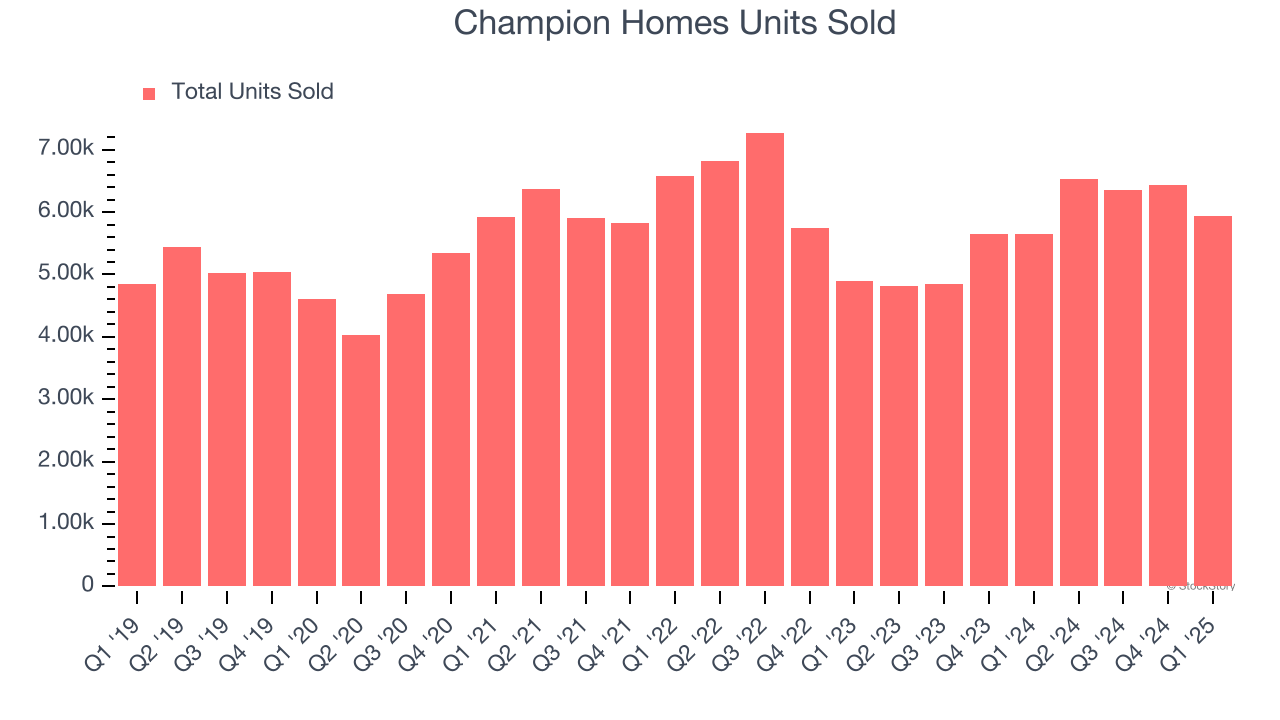
This quarter, Champion Homes’s revenue grew by 10.7% year on year to $593.9 million but fell short of Wall Street’s estimates.
Looking ahead, sell-side analysts expect revenue to grow 7.2% over the next 12 months. While this projection indicates its newer products and services will catalyze better top-line performance, it is still below average for the sector.
Software is eating the world and there is virtually no industry left that has been untouched by it. That drives increasing demand for tools helping software developers do their jobs, whether it be monitoring critical cloud infrastructure, integrating audio and video functionality, or ensuring smooth content streaming. Click here to access a free report on our 3 favorite stocks to play this generational megatrend.
Operating Margin
Champion Homes has been an efficient company over the last five years. It was one of the more profitable businesses in the industrials sector, boasting an average operating margin of 12.8%. This result was particularly impressive because of its low gross margin, which is mostly a factor of what it sells and takes huge shifts to move meaningfully. Companies have more control over their operating margins, and it’s a show of well-managed operations if they’re high when gross margins are low.
Analyzing the trend in its profitability, Champion Homes’s operating margin rose by 1.9 percentage points over the last five years, as its sales growth gave it operating leverage.
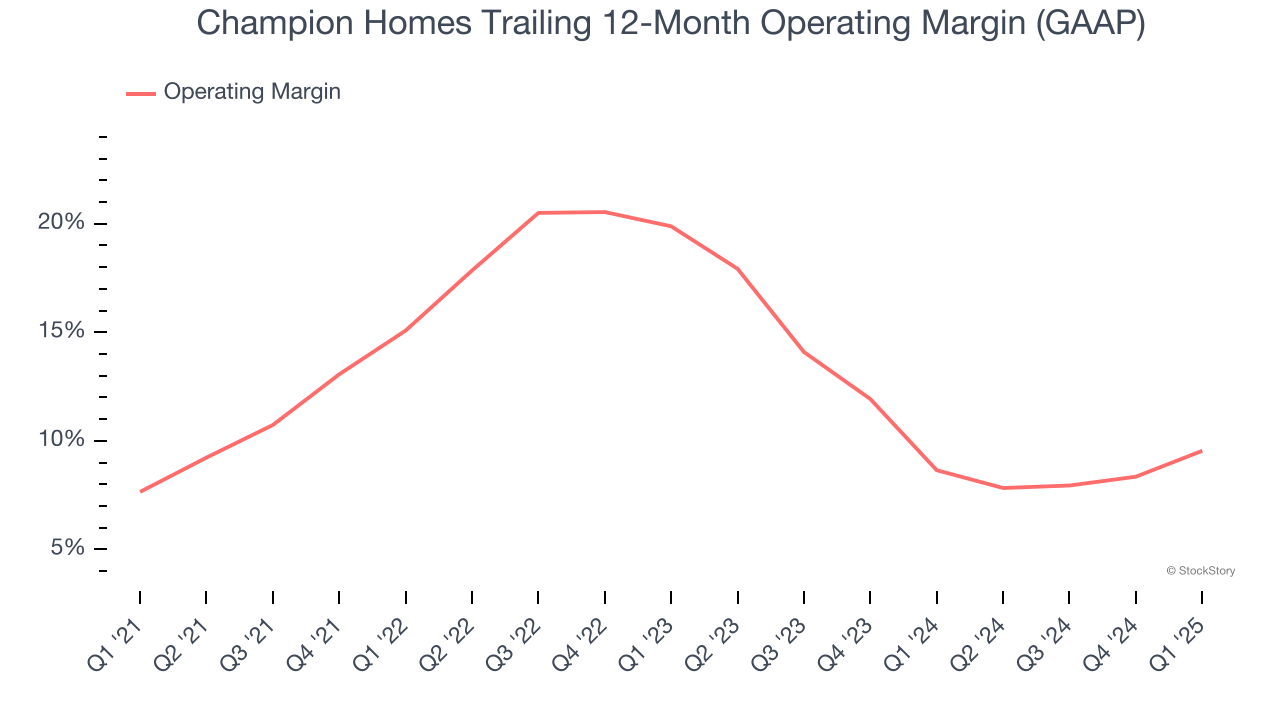
This quarter, Champion Homes generated an operating profit margin of 7.1%, up 5.7 percentage points year on year. The increase was driven by stronger leverage on its cost of sales (not higher efficiency with its operating expenses), as indicated by its larger rise in gross margin.
Earnings Per Share
Revenue trends explain a company’s historical growth, but the long-term change in earnings per share (EPS) points to the profitability of that growth – for example, a company could inflate its sales through excessive spending on advertising and promotions.
Champion Homes’s EPS grew at an astounding 25.1% compounded annual growth rate over the last five years, higher than its 12.6% annualized revenue growth. This tells us the company became more profitable on a per-share basis as it expanded.
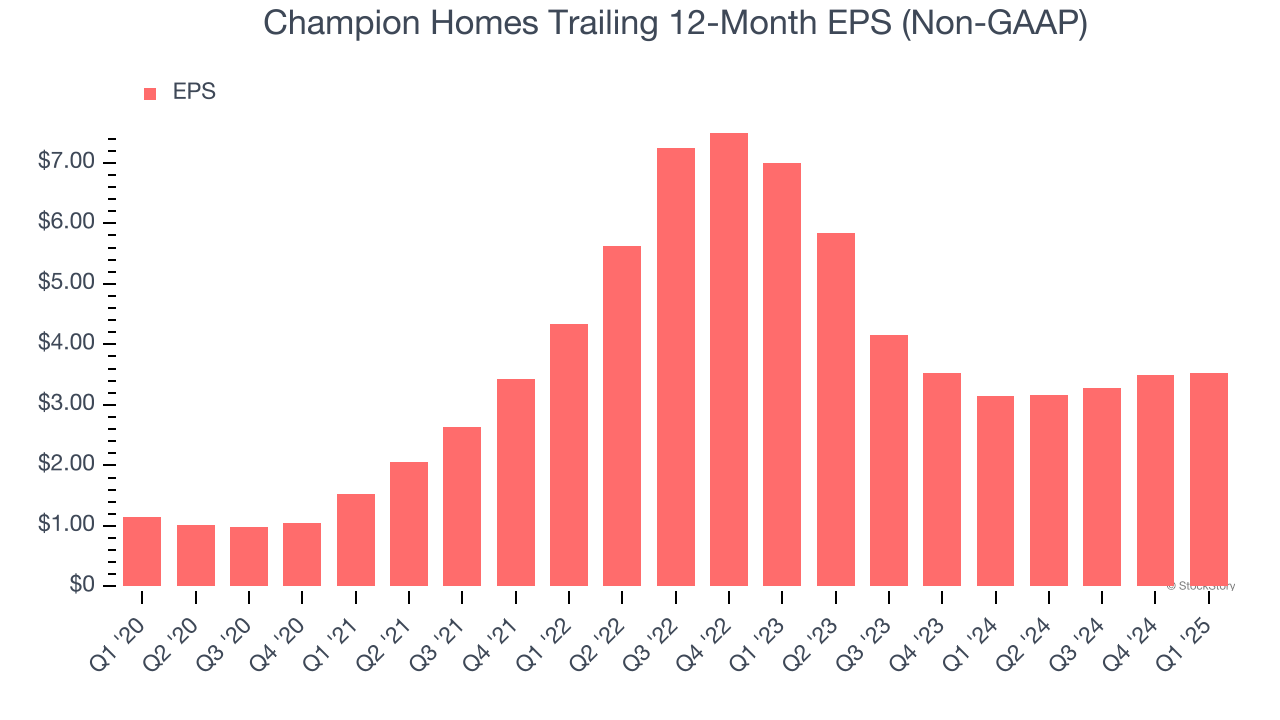
We can take a deeper look into Champion Homes’s earnings to better understand the drivers of its performance. As we mentioned earlier, Champion Homes’s operating margin expanded by 1.9 percentage points over the last five years. This was the most relevant factor (aside from the revenue impact) behind its higher earnings; taxes and interest expenses can also affect EPS but don’t tell us as much about a company’s fundamentals.
Like with revenue, we analyze EPS over a shorter period to see if we are missing a change in the business.
For Champion Homes, its two-year annual EPS declines of 28.9% mark a reversal from its (seemingly) healthy five-year trend. We hope Champion Homes can return to earnings growth in the future.
In Q1, Champion Homes reported EPS at $0.65, up from $0.62 in the same quarter last year. Despite growing year on year, this print missed analysts’ estimates, but we care more about long-term EPS growth than short-term movements. Over the next 12 months, Wall Street expects Champion Homes’s full-year EPS of $3.53 to grow 12%.
Key Takeaways from Champion Homes’s Q1 Results
We struggled to find many positives in these results. Its EBITDA missed and its EPS fell short of Wall Street’s estimates. Overall, this was a weaker quarter. The stock remained flat at $83.50 immediately after reporting.
The latest quarter from Champion Homes’s wasn’t that good. One earnings report doesn’t define a company’s quality, though, so let’s explore whether the stock is a buy at the current price. The latest quarter does matter, but not nearly as much as longer-term fundamentals and valuation, when deciding if the stock is a buy. We cover that in our actionable full research report which you can read here, it’s free.
